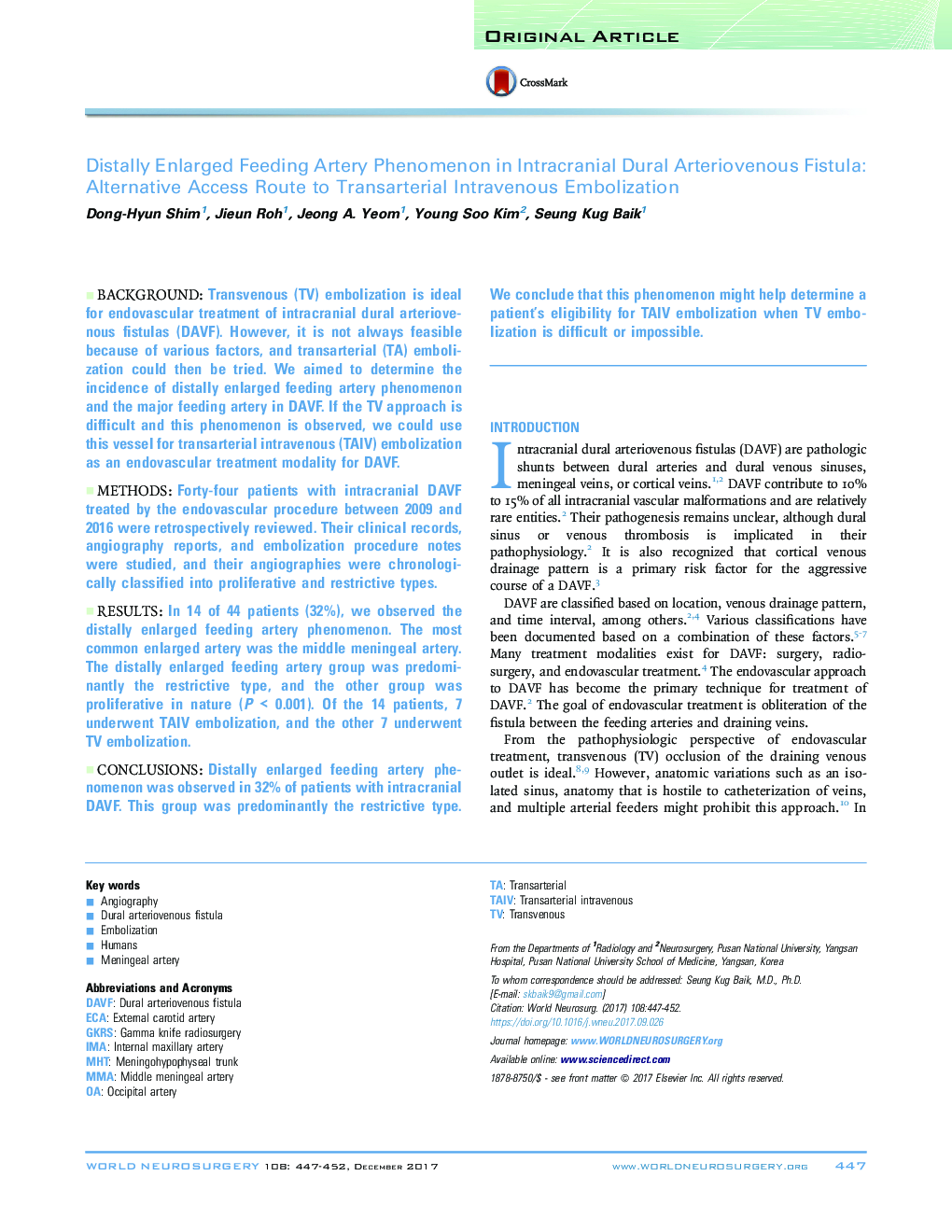| کد مقاله | کد نشریه | سال انتشار | مقاله انگلیسی | نسخه تمام متن |
|---|---|---|---|---|
| 5633792 | 1581447 | 2017 | 6 صفحه PDF | دانلود رایگان |

BackgroundTransvenous (TV) embolization is ideal for endovascular treatment of intracranial dural arteriovenous fistulas (DAVF). However, it is not always feasible because of various factors, and transarterial (TA) embolization could then be tried. We aimed to determine the incidence of distally enlarged feeding artery phenomenon and the major feeding artery in DAVF. If the TV approach is difficult and this phenomenon is observed, we could use this vessel for transarterial intravenous (TAIV) embolization as an endovascular treatment modality for DAVF.MethodsForty-four patients with intracranial DAVF treated by the endovascular procedure between 2009 and 2016 were retrospectively reviewed. Their clinical records, angiography reports, and embolization procedure notes were studied, and their angiographies were chronologically classified into proliferative and restrictive types.ResultsIn 14 of 44 patients (32%), we observed the distally enlarged feeding artery phenomenon. The most common enlarged artery was the middle meningeal artery. The distally enlarged feeding artery group was predominantly the restrictive type, and the other group was proliferative in nature (P < 0.001). Of the 14 patients, 7 underwent TAIV embolization, and the other 7 underwent TV embolization.ConclusionsDistally enlarged feeding artery phenomenon was observed in 32% of patients with intracranial DAVF. This group was predominantly the restrictive type. We conclude that this phenomenon might help determine a patient's eligibility for TAIV embolization when TV embolization is difficult or impossible.
Journal: World Neurosurgery - Volume 108, December 2017, Pages 447-452